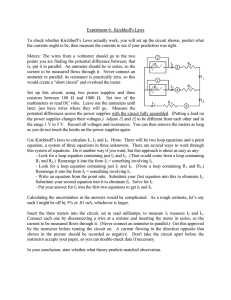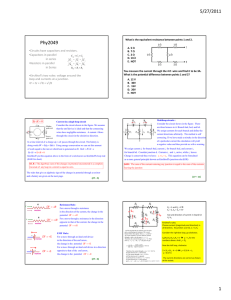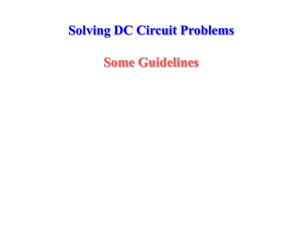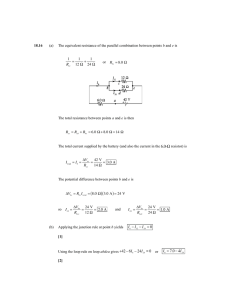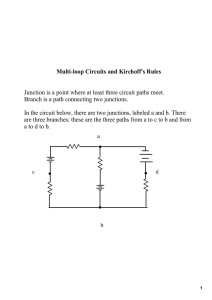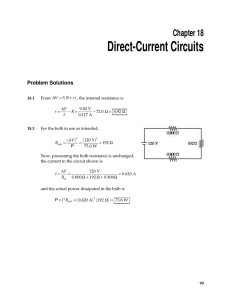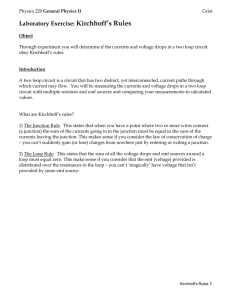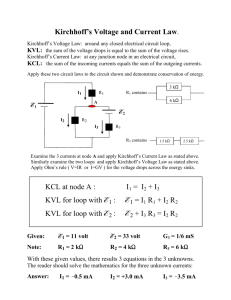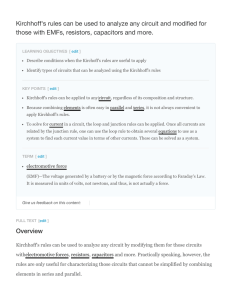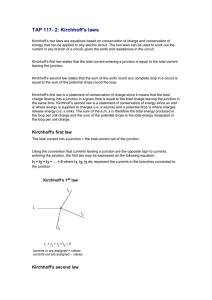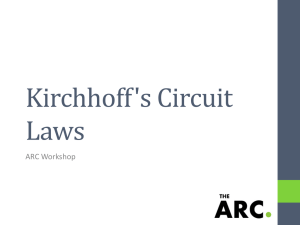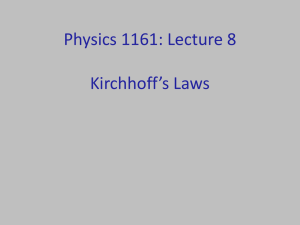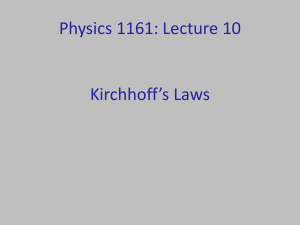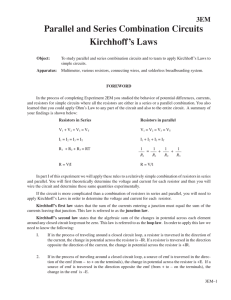Problem-Solving Strategy
advertisement
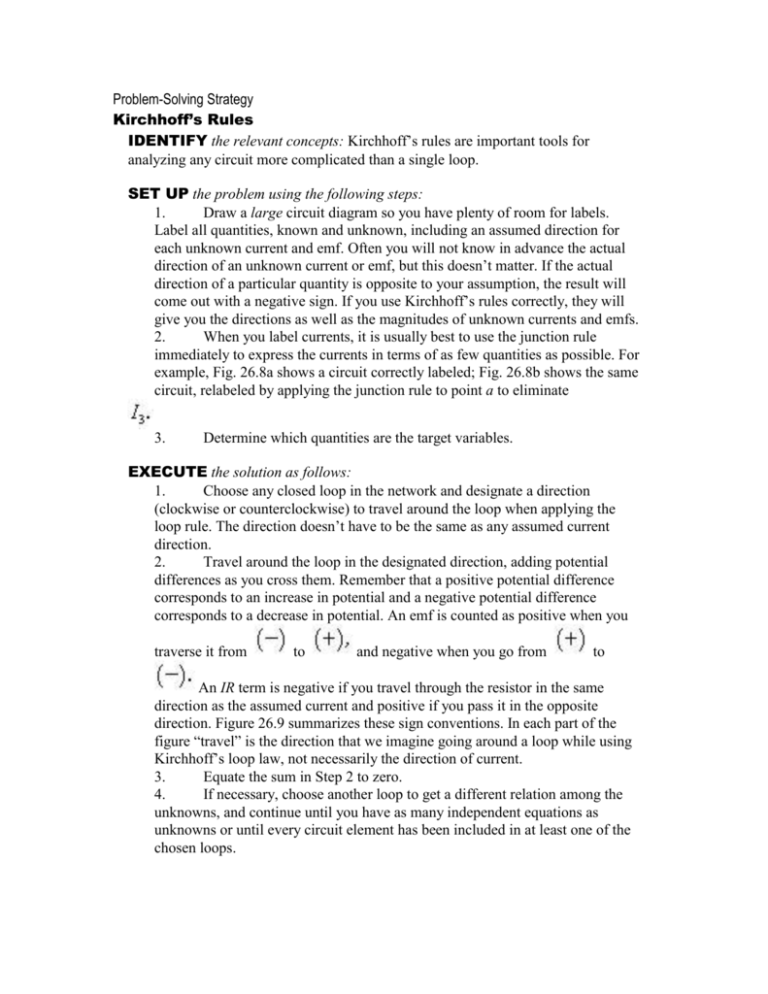
Problem-Solving Strategy Kirchhoff’s Rules IDENTIFY the relevant concepts: Kirchhoff’s rules are important tools for analyzing any circuit more complicated than a single loop. SET UP the problem using the following steps: 1. Draw a large circuit diagram so you have plenty of room for labels. Label all quantities, known and unknown, including an assumed direction for each unknown current and emf. Often you will not know in advance the actual direction of an unknown current or emf, but this doesn’t matter. If the actual direction of a particular quantity is opposite to your assumption, the result will come out with a negative sign. If you use Kirchhoff’s rules correctly, they will give you the directions as well as the magnitudes of unknown currents and emfs. 2. When you label currents, it is usually best to use the junction rule immediately to express the currents in terms of as few quantities as possible. For example, Fig. 26.8a shows a circuit correctly labeled; Fig. 26.8b shows the same circuit, relabeled by applying the junction rule to point a to eliminate 3. Determine which quantities are the target variables. EXECUTE the solution as follows: 1. Choose any closed loop in the network and designate a direction (clockwise or counterclockwise) to travel around the loop when applying the loop rule. The direction doesn’t have to be the same as any assumed current direction. 2. Travel around the loop in the designated direction, adding potential differences as you cross them. Remember that a positive potential difference corresponds to an increase in potential and a negative potential difference corresponds to a decrease in potential. An emf is counted as positive when you traverse it from to and negative when you go from to An IR term is negative if you travel through the resistor in the same direction as the assumed current and positive if you pass it in the opposite direction. Figure 26.9 summarizes these sign conventions. In each part of the figure “travel” is the direction that we imagine going around a loop while using Kirchhoff’s loop law, not necessarily the direction of current. 3. Equate the sum in Step 2 to zero. 4. If necessary, choose another loop to get a different relation among the unknowns, and continue until you have as many independent equations as unknowns or until every circuit element has been included in at least one of the chosen loops. 5. Solve the equations simultaneously to determine the unknowns. This step involves algebra, not physics, but it can be fairly complex. Be careful with algebraic manipulations; one sign error will prove fatal to the entire solution. 6. You can use this same bookkeeping system to find the potential of any point a with respect to any other point b. Start at b and add the potential changes you encounter in going from b to a, using the same sign rules as in Step 2. The algebraic sum of these changes is EVALUATE your answer: Check all the steps in your algebra. A useful strategy is to consider a loop other than the ones you used to solve the problem; if the sum of potential drops around this loop isn’t zero, you made an error somewhere in your calculations. As always, ask yourself whether the answers make sense. 26.8 Application of the junction rule to point a reduces the number of unknown currents from three to two. 26.9 When using Kirchhoff’s rules, follow these sign conventions as you travel around a circuit loop.

